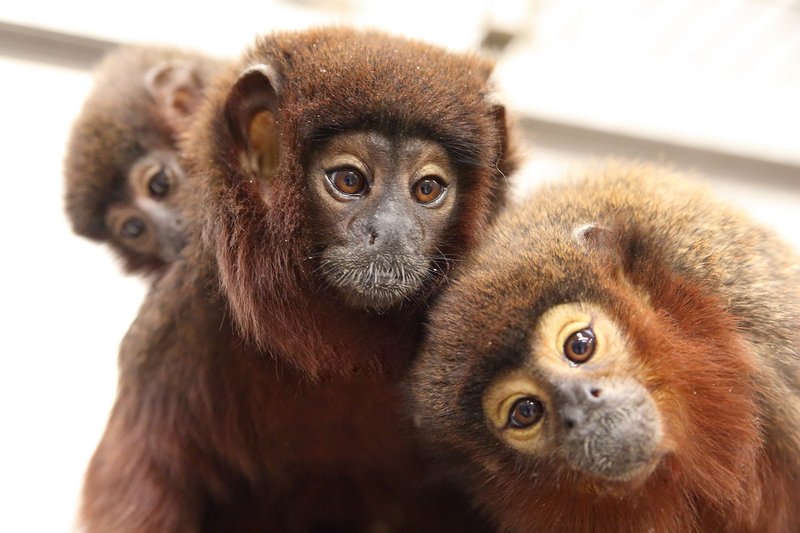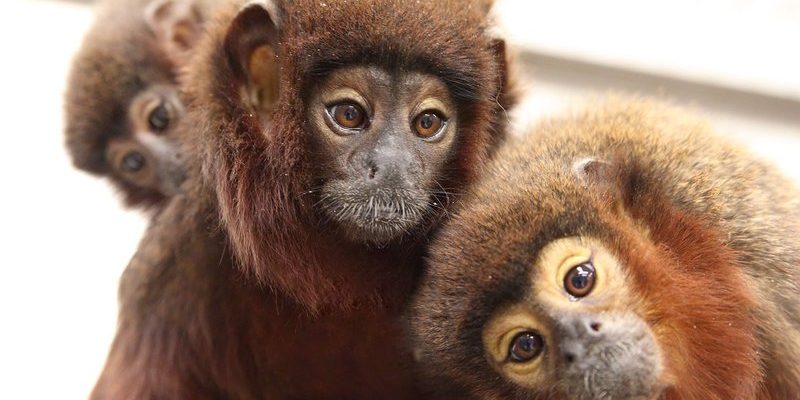
Titi monkeys are more than just adorable faces. They belong to the Callicebus genus and primarily inhabit the lush forests of South America. They’re famous for their affectionate behavior, particularly how they bond with their partners and offspring. So, if you’re curious about these charming primates and want to dive into some amazing facts, join me as we explore the top ten things that make Titi monkeys truly remarkable.
1. Unique Species and Appearance
Titi monkeys are part of the New World monkey family and come in several species. Each has its own unique coloration, ranging from sandy browns to deep reds and blacks. Their fur is soft, and it often looks like they’re wearing a cozy coat!
One of the defining features of Titi monkeys is their long tails, which can be as long as their bodies. These prehensile tails help them balance while jumping from branch to branch, almost like tightrope walkers of the forest canopy. You might be wondering, “What’s so special about a tail?” Well, in the monkey world, a long, strong tail allows them to be agile and navigate their arboreal homes with ease, providing them safety from predators.
Their size is pretty petite too, typically weighing between 3 to 9 pounds. This means they’re light and quick, making them elusive little creatures. Have you ever tried spotting a tiny bird in a gloomy forest? That’s how hard it can be to see a Titi monkey darting through the foliage!
2. Social Butterflies
Here’s the thing about Titi monkeys: they are highly social animals. They live in small family groups, usually consisting of a mating pair and their offspring. These tight-knit groups create a strong bond among their members, which can be quite a sight to behold.
You might see them grooming each other, a common behavior that strengthens their social ties. This grooming is more than just tidying up—it’s a vital part of their communication. It shows care and affection, much like how friends might hug or pat each other on the back.
What’s even more heartwarming is their parenting style. Titi monkeys take turns caring for their young. Both parents are involved, sharing the responsibilities of feeding and protecting their babies. It’s like having a supportive family team working together to raise their kids!
3. Communication Skills
Titi monkeys have a rich vocabulary, using a variety of vocalizations to communicate with one another. Their calls can range from soft whistles to loud hoots, and each sound carries meaning. Imagine trying to discern different tones in a song—Titi monkeys do something similar with their calls.
Interestingly, they also communicate through body language. You might notice them jumping or swaying to express excitement or anxiety. If they feel threatened, they might make a series of alarming calls to alert their family members. Think of it like sending a “watch out!” text in a group chat.
This combination of vocal sounds and body movements allows Titi monkeys to maintain close contact and ensure everyone in the group knows what’s going on. It’s like a tiny language full of emotions and warnings all wrapped up in their lively interactions.
4. Diet and Feeding Habits
What do Titi monkeys eat? Well, they have quite the varied diet! These little primates are primarily frugivores, meaning they mainly eat fruits. Common favorites include berries, figs, and bananas. It’s a bit like living in a fruit market where everything is ripe and ready to enjoy!
In addition to fruits, Titi monkeys also munch on leaves, flowers, and even insects now and then. This diverse diet helps them gather the nutrients they need to stay healthy and energetic. But you might be wondering, how do they find their food?
Titi monkeys have a keen sense of sight and smell. They often forage together, helping each other spot the best fruit. This teamwork not only keeps them well-fed but also reinforces their social bonds. It’s almost like a family picnic in the canopy—they make the most of their food adventures!
5. Habitat and Range
Titi monkeys call the rainforests of South America home. You can find them in countries like Brazil, Venezuela, Colombia, and Peru. Their preferred habitats are tropical forests, where dense tree cover provides safety and plenty of food sources.
These monkeys thrive in *high-canopy* areas, often staying above 30 feet off the ground. But here’s the catch: they prefer habitats near rivers or streams, which help support their diet and social structure. Unfortunately, as forest habitats are threatened by deforestation, the survival of Titi monkeys is becoming a growing concern.
Imagine living in your dream home, and suddenly, it’s being taken away. That’s what’s happening to their environment. Conservation efforts are underway, but these creatures need all the help they can get. Protecting their habitat means securing their future and allowing them to continue their fascinating lives in the treetops.
6. Reproduction and Lifespan
Titi monkeys have a unique mating system, often forming monogamous pairs that stick together for life. This doesn’t just make them cute; it also ensures that both parents are involved in raising their young, which greatly increases their chances of survival.
After a gestation period of about 5 to 6 months, a female will usually give birth to one baby at a time. These babies are born with their eyes closed and rely entirely on their parents for care. This bond strengthens as the baby grows, and the father often plays a huge role in caring for the little one, giving them an extra edge in life.
In the wild, Titi monkeys can live up to 12 years, but in captivity, with proper care, they can live much longer—sometimes up to 20 years. It’s like having a long-time friend beside you, adding value to every moment spent together.
7. Conservation Status
Speaking of their future, Titi monkeys’ populations are facing significant challenges. Many species are currently classified as vulnerable or endangered, mainly due to habitat loss from deforestation and illegal pet trade.
Conservation efforts are critical to protect these sweet little primates. Organizations are working to establish reserves and enforce laws against hunting and trading. You might think it’s just a small step in a big world, but every action helps preserve their habitat and ensure these monkeys have a safe place to live.
Moreover, educating the public about Titi monkeys is essential. The more people understand and appreciate them, the more advocates there will be for their protection. It’s like rallying a team to support a cause—we can all contribute to making a difference!
8. Fun Facts
Now, let’s wrap things up with some fun tidbits. Did you know that Titi monkeys are often referred to as “The Love Monkeys“? This nickname comes from their affectionate behavior towards each other. They love to cuddle and groom one another, showing us that relationships are important—whether in the wild or in our own lives!
Another quirky fact is that Titi monkeys can leap up to 15 feet in a single bound! That’s like jumping the length of a school bus! Their agility and cleverness enable them to navigate their environment quickly, helping them avoid predators and find food.
And here’s something that might surprise you: Titi monkeys are known to form friendships with other species, especially small birds. This unlikely pairing can lead to mutual benefits as they help each other spot danger. It’s a beautiful example of harmony in the animal kingdom.
9. Cultural Significance
Titi monkeys hold a special place not just in the ecosystem but also in local cultures of South America. In several indigenous communities, they are seen as symbols of love and family due to their strong pair bonds. There are even folktales that highlight their loyalty and affectionate nature.
Additionally, ecotourism has started to focus on these fascinating monkeys, drawing visitors who want to see them in their natural habitat. This interest can be beneficial for conservation, as it raises awareness and funds to protect their environments.
Imagine going on a trek through the jungle and stumbling upon a playful pair of Titi monkeys! Those experiences create lasting memories and foster a love for wildlife preservation.
10. In Popular Culture
While Titi monkeys may not be as famous as some other animals, they’ve made appearances in a variety of platforms, from documentaries to children’s books. Their unique characteristics and endearing behavior make them a favorite among animal enthusiasts. After all, who wouldn’t want to watch a little monkey swing through the trees?
These appearances help to educate audiences about their existence and the need for conservation. Every time someone shares a video or a story about Titi monkeys, it helps spread the word about their plight and the importance of protecting their habitats. It’s a delightful cycle of awareness, building a community focused on their survival.
In conclusion, Titi monkeys are far more than just charming little creatures. They play a crucial role in their ecosystems, have unique social structures, and are deeply connected to the cultures and stories around them. If you ever get a chance to witness their playful antics in the wild, consider yourself lucky—these tiny monkeys remind us of the beauty and intricacies of nature. Let’s do our part to keep their world thriving!

